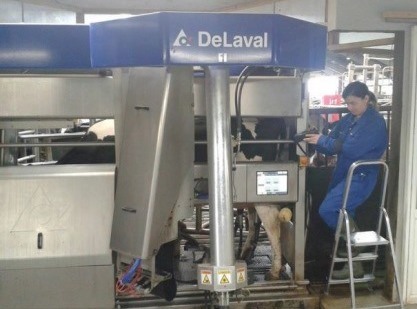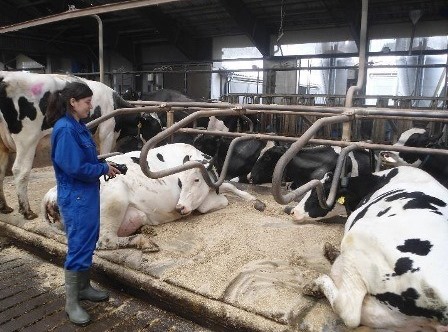 Large-scale methane measurements on individual ruminants for genetic evaluations
Large-scale methane measurements on individual ruminants for genetic evaluations
STSM for comparison of LMD & FTIR
My name is Sarah Mühlbach, I am a PhD student at Martin Luther University Halle-Wittenberg, Germany. For my PhD project I am measuring methane with a Laser Methane Detector (LMD) on research stations and commercial farms. Methane is measured with a lot of different techniques. From this the question arises whether these techniques create similar data and fit together. So there was the idea to go on a STSM at Aarhus University. From 06/06/2016 to 19/06/2016 I stayed at the research station in Foulum. There methane was measured with our LMD and the local Fourier transform infrared (FTIR) detector in automated milking systems (AMS).In the first experiment we measured the methane concentration of dairy cows under equal conditions in the AMS. Every time the cows were milked they received concentrate pellets in a feed bin. While the cows were eating a tube from the FTIR was collecting exhaled air samples from the cow. In these samples the methane concentration in the cow’s breath was analyzed. With our handy LMD we also aimed also at the feed bin of the AMS and measured the methane concentration in the breath at the same time as the FTIR.
The second experiment was also for comparing LMD and FTIR, but the LMD was used under its regular measurement regime. That means I measured the methane concentration of the cows while they were ruminating in their groups. Each cow was measured for five minutes and for three times on different days while lying or standing in their cubicle.


During my two weeks at Foulum we had a bunch of ideas of smaller or bigger exciting experiments, but unfortunately the time passed too fast not only because of our work which I really enjoyed. Also all the friendly people I met made these weeks unforgettable. After work I enjoyed the time with picnic at the fjord, a Brazilian party or just watching the European football championship.
During this STSM I had a great time! I got a lot of interesting data and met wonderful people.
Thanks to everybody who made this time as special as it was!



